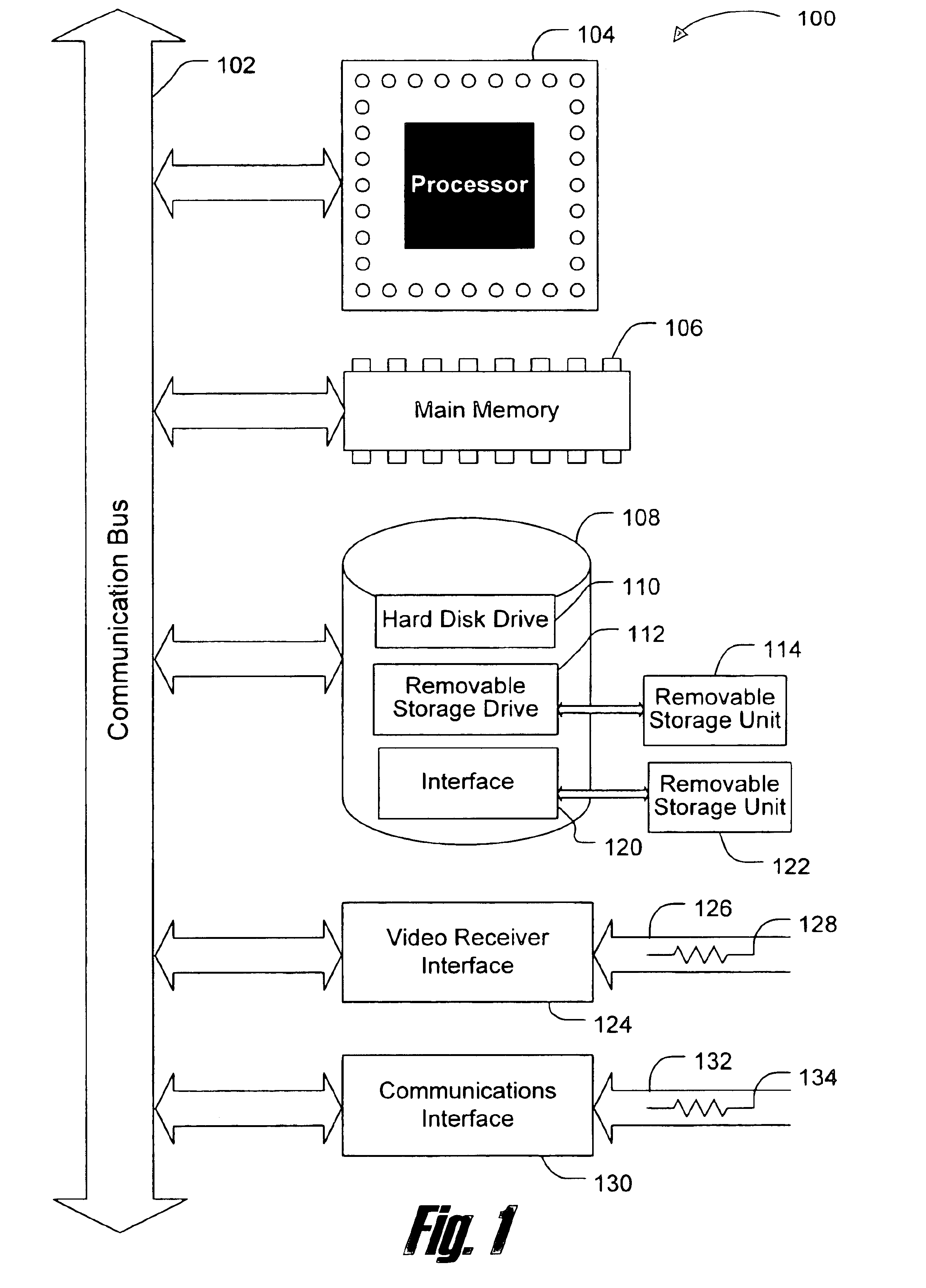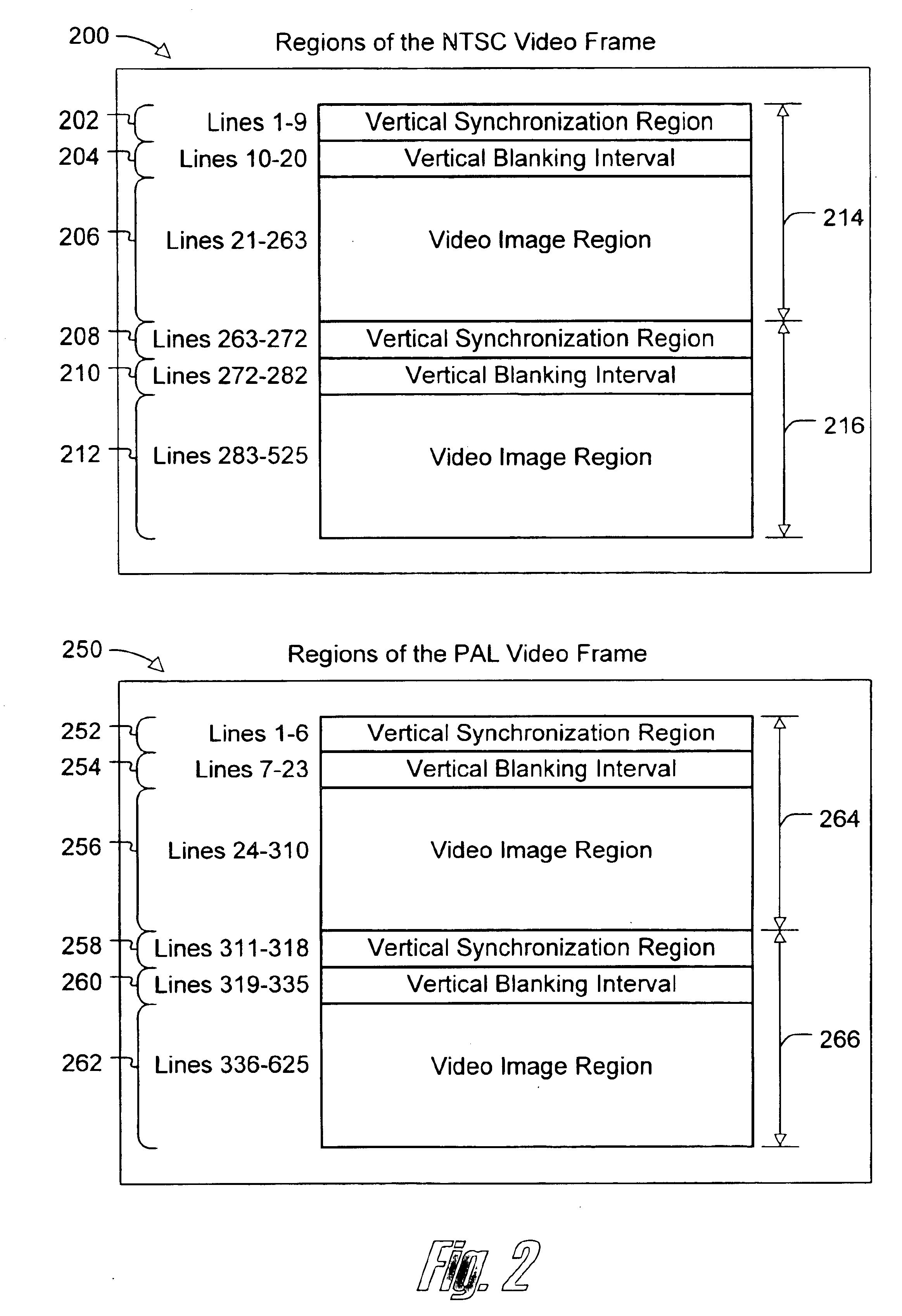System and method for detecting modifications of video signals designed to prevent copying by traditional video tape recorders
a video signal and video system technology, applied in the field of video system anti-copying process of video tape recorder, can solve the problems of difficult locking of the television receiving equipment to the signal, picture breakage, and slight inaccurate timing, and achieve the effect of removing noise and not eliminating anti-copying artifacts
- Summary
- Abstract
- Description
- Claims
- Application Information
AI Technical Summary
Benefits of technology
Problems solved by technology
Method used
Image
Examples
Embodiment Construction
The present invention is directed toward a system and method for applying traditional video-tape-recorder-design based anti-copying processes to modern digital video recording systems. The present invention is disclosed and described herein in terms of a video capture card coupled with a general purpose personal computer. However, after reading this description it will become apparent to one skilled in the relevant art(s) how to implement the invention in alternative embodiments and alternative applications. For example, alternative embodiments include digital VCRs, handheld digital cameras, personal digital assistants (PDAs) and next-generation wireless handsets. As such, the description of this example embodiment should not be construed to limit the scope and breadth of the present invention.
FIG. 1 is a block diagram illustrating an example computer system in which elements and functionality of the invention are implemented according to one embodiment of the present invention. The...
PUM
 Login to View More
Login to View More Abstract
Description
Claims
Application Information
 Login to View More
Login to View More - R&D
- Intellectual Property
- Life Sciences
- Materials
- Tech Scout
- Unparalleled Data Quality
- Higher Quality Content
- 60% Fewer Hallucinations
Browse by: Latest US Patents, China's latest patents, Technical Efficacy Thesaurus, Application Domain, Technology Topic, Popular Technical Reports.
© 2025 PatSnap. All rights reserved.Legal|Privacy policy|Modern Slavery Act Transparency Statement|Sitemap|About US| Contact US: help@patsnap.com



